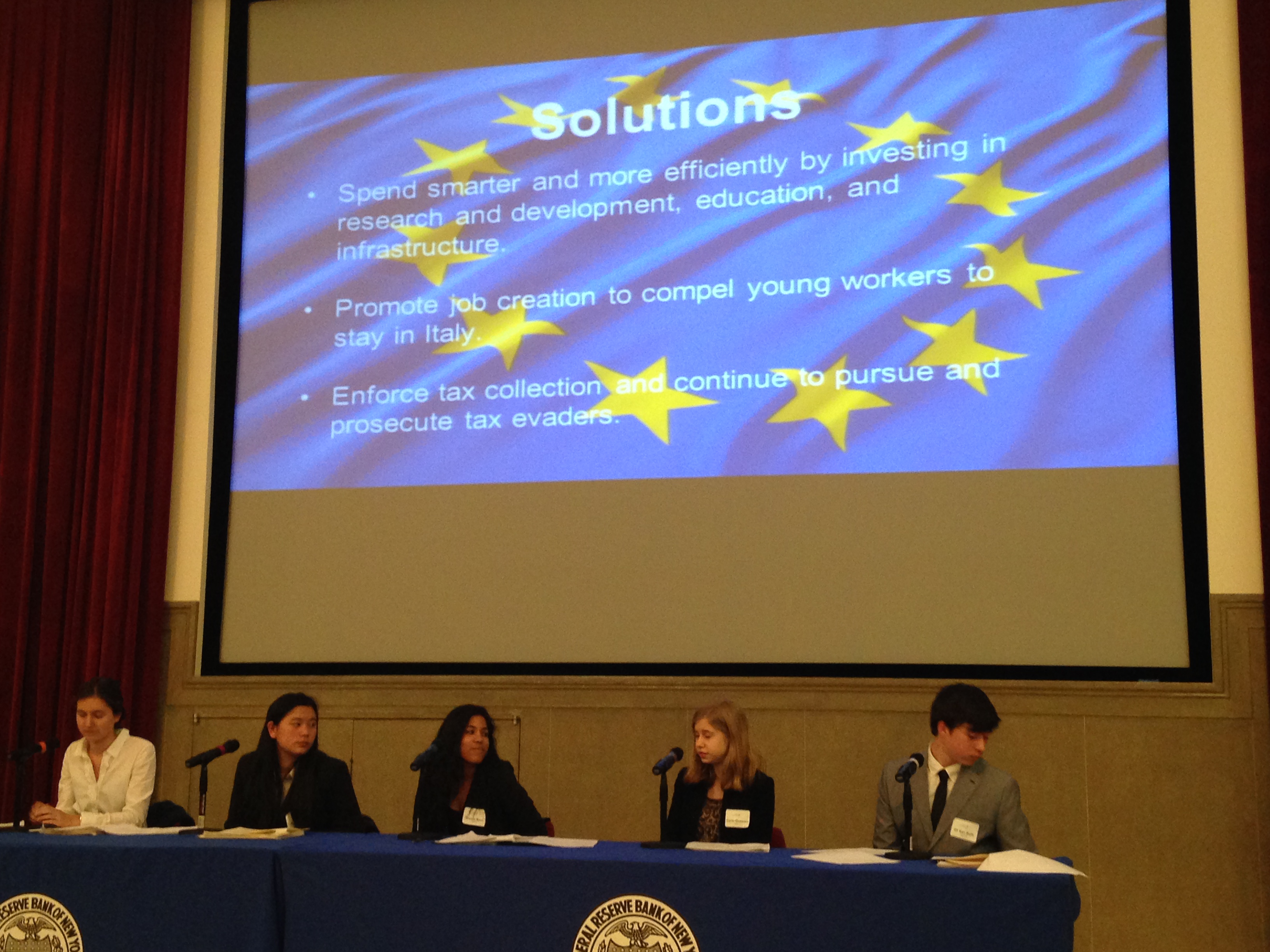AIER Participates in the Euro Challenge Competition
The Euro Challenge brings together high school students from around the country, and gives them a chance to think like an economist for the day, to “advise” policymakers about the Euro, and to propose solutions to current economic challenges. I had the privilege of judging the semi-finals this year, which were held in New York on April 30th.
The program was launched in 2005 by the Delegation of the European Union to the United States, in partnership with the Moody’s Foundation, and with the Federal Reserve Bank of New York serving as program advisor.
At the semi-finals, 25 teams from around the country made 15-minute presentations in which they were required to: (1) Describe the current economic situation in the Euro area; (2) Select one economic-related challenge confronting the Euro area as a whole, and pick one of the 18 member countries of the Euro area to illustrate that challenge; (3) Recommend a policy or policies for addressing the identified challenge in the selected country.
Panels of judges were assigned to assess five teams each, and select one that would advance to the final round. It was a hard task because all of the teams were thoroughly prepared, had clear understandings of economic challenges facing European Union member states, proposed feasible and fiscally responsible solutions to the economic challenges facing their selected country, and creatively delivered their presentations.
The team from The High School for Math, Science and Engineering, New York City.
After deliberations, my panel of judges selected Naperville Central High School from Naperville, Illinois, to advance to the final round. In the afternoon, all the judges and all of the participants observed the final presentation of the five best teams. The overall winner of the Euro Challenge 2015 was Princeton High School, of Princeton, New Jersey.
As I learned from talking to students afterwards, the actual presentation that day was a culmination of a lot of preparatory work. They studied the economy of their selected country, and they reached out to the embassy and trade representative of that country in the U.S. to find out the challenges and the most current information that might not yet be covered in textbooks and other media. They collaborated, they divided tasks, and they delved into the data.
This kind of experiential learning and applied economic research is also at the heart of the AIER approach to internships, whether for high-school, undergraduate, or graduate students. As we found out at AIER, and as the Euro Challenge confirmed for me, active learning and teamwork are the best ways to entice the young generation of Americans to learn economics.









